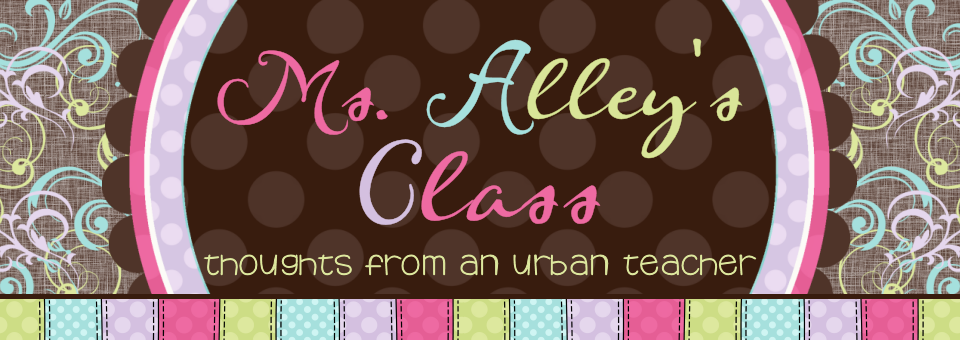I can't believe I have gotten through this book! I highly recommend it for all K-3 teachers! I would say it has been the best math resource I've read yet...and I read a lot :)
So for my last post about this fabulous book...I am going to talk about the data and calendar routines chapter. Now, I am going to admit something that I am a little embarrassed to admit to all of you K-2 teachers.....I do not currently do a whole-class calendar routine.....I hope you don't hate me :) In my defense, in the past I have looked at calendar as something for kindergarten and maybe first grade, but something that was "too easy" for 2nd graders. However, after reading this chapter, I will definitely be doing a calendar routine...different than I had once pictured though.
For any skeptics like me out there - let me tell you why calendar and other data routines are important for building number sense. Shumway says that, "the math is embedded in the discussion -- it is being applied and used authentically within a context." What I love about this is that it brings math to life in a practical way. So often I'm not sure how to make math relevant to my students, but this is so obviously relevant!
Shumway shares 3 basic ways to use data routines are: Calendar, Collecting Data over a Long Period of Time, and Counting the Days of School.
Calendar
Other than the obvious prompts like asking a students to read today's date or asking a student to count the days in a month, Shumway has some great ideas for taking this routine to the next level.
My favorite idea (that I will be doing this year) is to purchase a 12 month calendar and hang a few months at a time (if not the whole year). This will give students more of an opportunity to see how the numbers and the days work together. It will provide opportunities for discussions on things like, "how many days until ____'s birthday?" or "how long ago was our field trip?"
Some other great questioning prompts she mentions are:
"Find a number that's made of a 10 and a 2."
"Find a number that's one less than 16."
"If March ends on a Tuesday, what day will April start on?"
Collecting Data Over a Long Period of Time
I am also super excited about this one! I've never done this (other than during a science unit), but I think it will have a huge impact on students if done over the whole year. Some suggestions for collecting data are: weather, temperature, sunrise/sunset. As I was reading this section, even though I was super excited, I was also thinking to myself, "when am I going to have time to do all of these routines everyday?" To my delight Shumway answered my question! She said that even though data is collected everyday (class jobs), the data is not talked about everyday. She said in 3rd grade she did a data mini-lesson once a month, but with Kinder or 1st she did almost daily...which seems more appropriate. I teach 2nd grade, so I think I will find a happy medium between weekly and monthly. Another thing I loved is that Shumway assigns multiple class jobs for the calendar/ data collection (another thing I'll be taking away from this book). She has one person do the actual calendar (days in school), one person do the weather (record the temperature on the graph), one person do the sunrise/sunset times (record on the graph), one person do the moon phases (which I'm not sure I'll do), and one person be the data supervisor to make sure everyone is doing their job correctly or to fill in for someone in case someone is absent. I love it!
Counting the Days in School
In this section, I again love how Shumway differentiates how this routine looks in K-1 and then in 2-3. One thing that makes sense, but I hadn't considered, is that the use of straws (ones, tens, and hundreds) is not appropriate for K-1. She says it's too abstract of a concept that one 10 = 10 ones, which is called unitizing. That tends to be grasped toward the end of first or in 2nd. I suppose if you have a class of first graders that is solid on unitizing then go for it, but in general, I guess it's best to wait until 2nd grade to use the straws. What do you all think about that?
Rather than the straws (do you like my technical term?!) in K-1, Shumway suggests using a linear model - on counting tape or an array model on a hundreds chart or pocket chart. She says 2nd and 3rd grade teachers can use these as well, but will need to rachet up the math or change the focus to meet their needs. Some suggestions for that are using colors to make patterns and predict what number will be the next "yellow" number, talk about the patterns on the hundreds chart, and use the calendar to talk about days of school...like what day of school will October 2nd be? Or what day will it be on our 49th day of school? (So kids have to consider weekends and number of days in each month.)
So that about does it for the number sense routines in this book. The most important idea in this book is being a responsive teacher - constantly assessing what our kids need and then planning routines to help move them to the next landmark in their mathematical thinking. I hope you've enjoyed reading about all the great routines! I'd love to hear more about what works in your classrooms!!




























































































